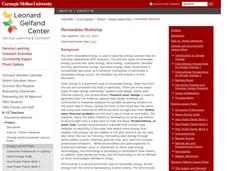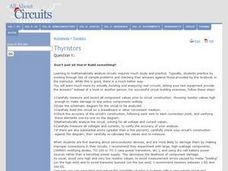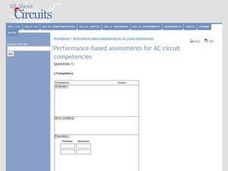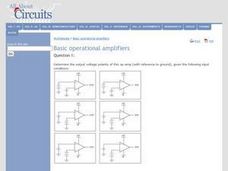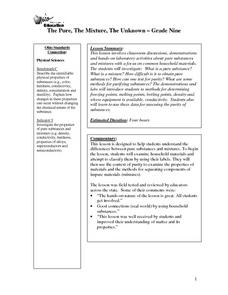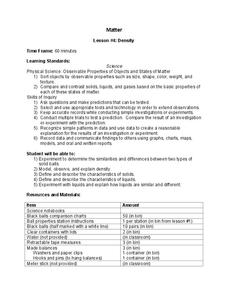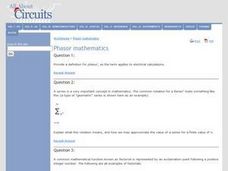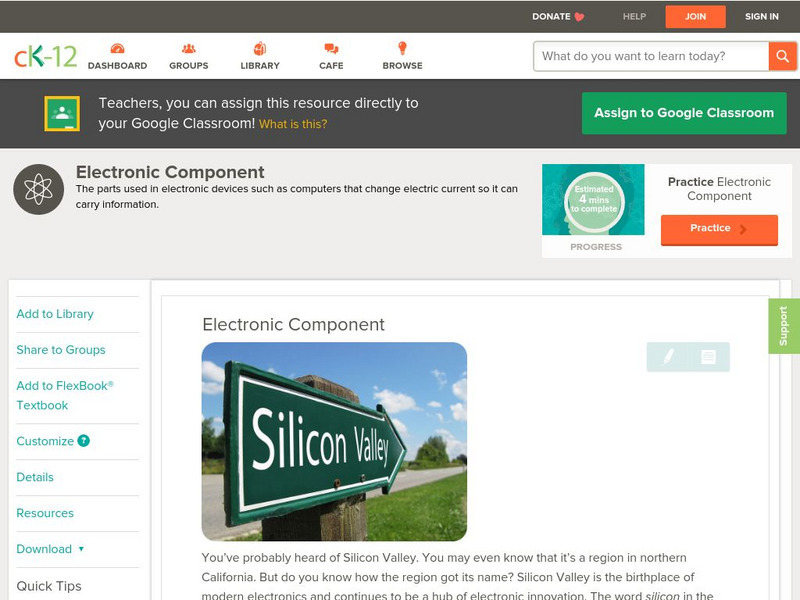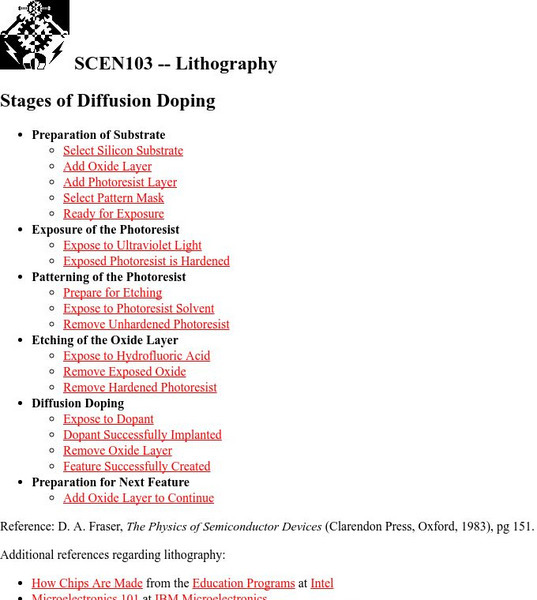Curated OER
Conductors, Insulators, and Semiconductors
Students will investigate the differences in conductivity of materials, design a variety of complete circuits, and observe the differences between the manner in which light is produced in an incandescent light bulb and an LED.
National Nanotechnology Infrastructure Network
Hiding Behind the Mask
Microchips are a man-made wonder. Investigate the manufacturing wonder with a hands-on inquiry-based lesson. Scholars simulate the process of pattern transfer using photoresist. Their conclusion identifies how their process replicates...
Teach Engineering
Fun With Nanotechnology
Introduce your class to nanotechnology applications with three demonstrations that showcase scientific principles related to ferrofluids, quantum dots, and gold nanoparticles. Groups will work more closely with these applications in the...
Curated OER
Miscellaneous diode applications
In this physics worksheet students complete a series of short answer questions on different circuitry and how things operate.
Carnegie Mellon University
Renewables Workshop
Youngsters examine resource maps to find out which states are using solar and wind power and discuss as a class various other renewable energy sources. They use a provided data table to record pros and cons to each technology, build and...
Curated OER
Thyristors
In this electronics worksheet, students complete 25 short answer questions on thyristors. They identify the different types of thyristors and how they function in the circuit.
Curated OER
Bipolar Transistor Biasing Circuits
In this electronics worksheet, students analyze electrical circuits to answer 21 short answer and problem solving questions about bipolar transistors.
Curated OER
Performance-based Assessments for AC circuit Competencies
In this electronics worksheet, students predict the behavior of 51 circuits and compare their prediction with actual values. They make the necessary corrections when values don't match.
Curated OER
Basic Operational Amplifiers
In this electronics worksheet, students analyze different amplifier circuits and answer 18 short answer and problem solving questions about them.
Curated OER
Metalloids
Students discuss metalloids, their use as semiconductors, and their impact on the computer industry. They work in groups to create a visual timeline showing the evolution of the computer.
Curated OER
The Pure, The Mixture, The Unknown
Ninth graders participate in classroom discussions, demonstrations and hands-on laboratory activities about pure substances and mixtures with a focus on common household materials. They investigate: What is a pure substance? What is a...
Virginia Department of Education
Metals, Nonmetals, and Metalloids
How can one easily classify metals, nonmetals, and metalloids? Pupils answer this question as they experiment with unknown substances and perform tests on conductivity, brittleness, and malleability to determine...
Curated OER
Density
Learners predict when an object will float or sink based on comparison of density of the object to the density of the substance in which it is placed. The access a website and sketch the object in the first column of their table and then...
Curated OER
Phasor Mathematics
In this mathematics worksheet, students solve 13 questions on series, factorial, phase mathematics and calculus. They define what phasor means.
Curated OER
Design Project: Radio Transmitter
In this electrical circuit worksheet, students research the Federal Communication Commission to determine the regulations for a non-license radio transmitter. They will answer a series of another 3 questions to show an understanding of...
Curated OER
Photocells II: The Photoelectric Effect in Photocells
Students discuss the principles of atomic structure that underlie the operation of a photovoltaic cell and explains how they apply to a photovoltaic cell's operation. An area of the classroom is staked off to represent a photovoltaic...
Curated OER
The Story of the Transistor
Students brainstorm on how certain items have become smaller as technology advances. They watch a video about the history of the transistor.
Curated OER
Scientists at Work: What'll they think of next?
Students explore scientific discovery while watching a video. They, in groups, are to research a scientific invention and present their findings to the class.
Other
Univ. Of Delaware Physics: More Semiconductor Physics
The University of Delaware Physics Department provides this site from a site titled "Silicon, Circuits, and the Digital Revolution," here is a series of four pages which explain the details behind how semiconductors work. An introduction...
Concord Consortium
Concord Consortium: Stem Resources: Semiconductors
Several visualizations that help students understand the basic properties of semiconductors. Students can turn a silicon crystal into an insulator or a conductor, investigate the probability waves of an electron, and make a depletion...
CK-12 Foundation
Ck 12: Physical Science: Electronic Component
[Free Registration/Login may be required to access all resource tools.] Overview of electronic components: semiconductors, diodes, transistors, and integrated circuits.
Other
University of Delaware Physics Department: Lithography
University of Delaware Physics Department provides this indexing page for a slide show presentation.
Other
Physics Web: Nobel Prize Goes to Semiconductor Pioneers
This site from Physics Web gives information on the 2000 Nobel Prize in Physics. It was awarded to Zhores Alferov and Herbert Kroemer for the invention of semiconductor lasers, integrated circuits and other high-speed electronic devices....
Ducksters
Ducksters: Physics for Kids: Electrical Conductors and Insulators
Kids learn about electrical conductors and insulators in the science of electricity and physics including materials, superconductors, and semiconductors.




